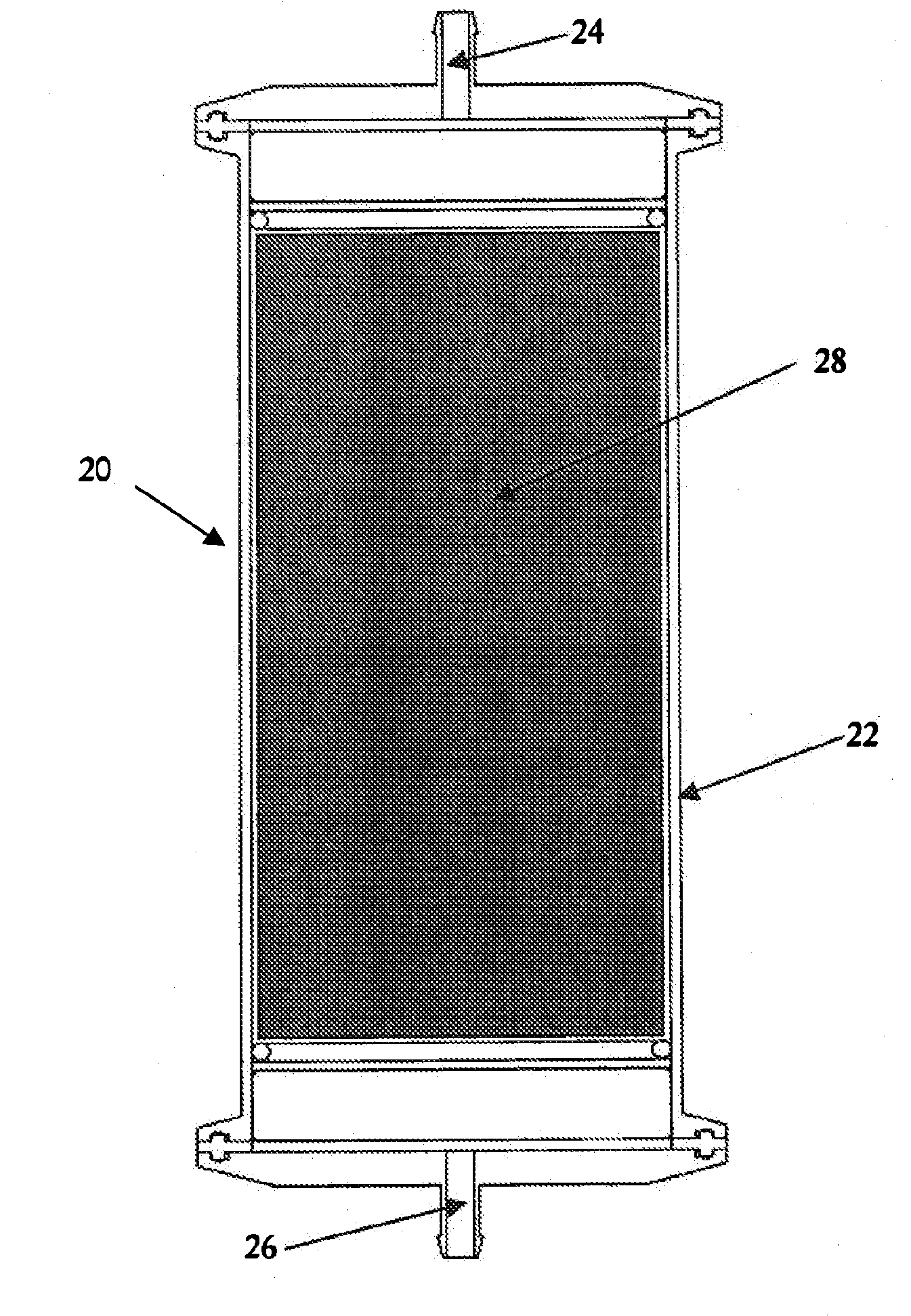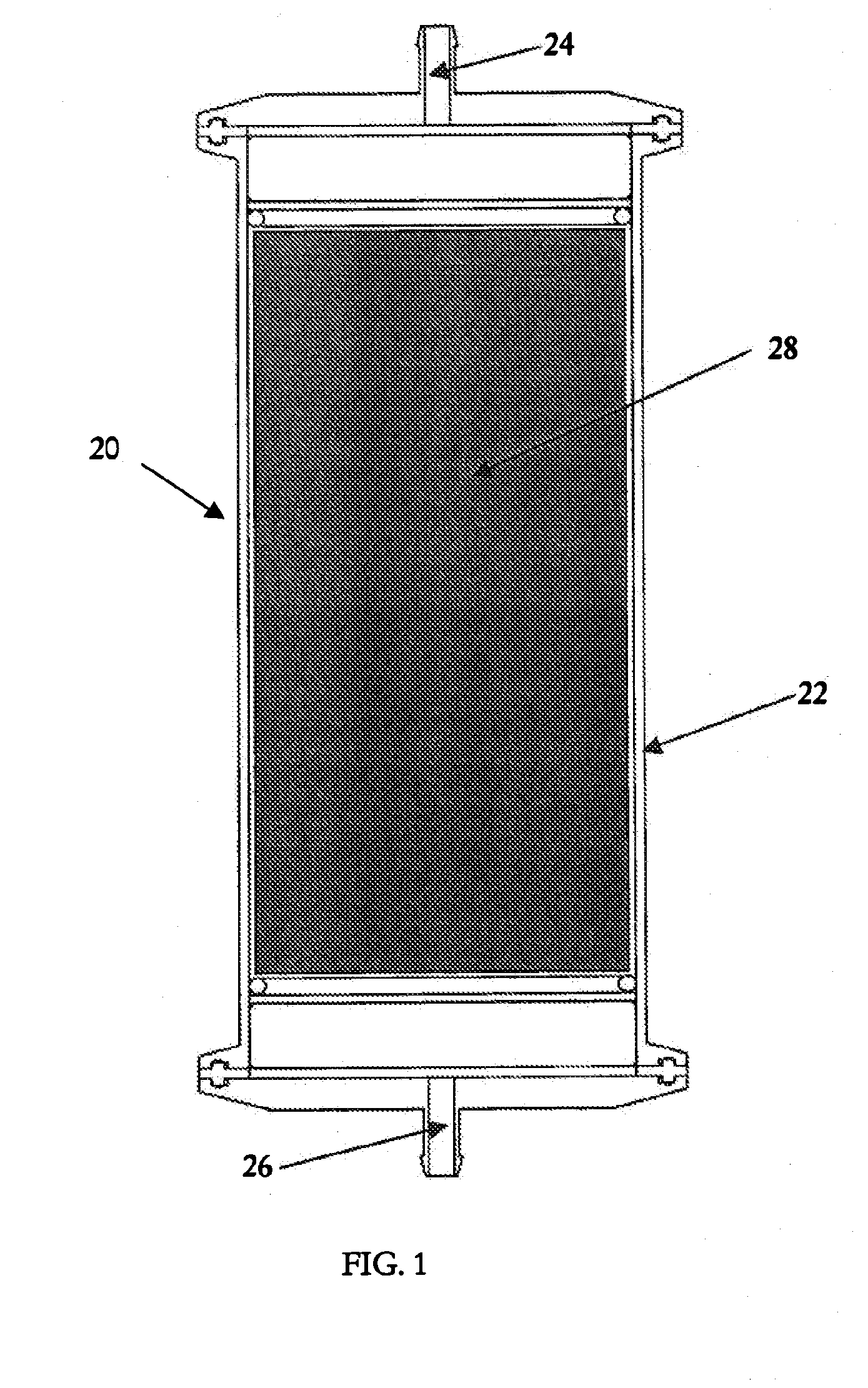Water Filter Materials And Water Filters Containing A Mixture Of Microporous And Mesoporous Carbon Particles
a technology of activated carbon particles and water filter materials, which is applied in the direction of cartridge filters, filtration separation, separation processes, etc., can solve the problems of incomplete removal of bacteria and viruses, increased risk for infants and persons with compromised immune systems, and increased risk for general population, so as to reduce bacteria and viruses, reduce the effect of microorganisms
- Summary
- Abstract
- Description
- Claims
- Application Information
AI Technical Summary
Benefits of technology
Problems solved by technology
Method used
Image
Examples
example 1
Filter Containing Microporous and Mesoporous Activated Carbon Particles
[0114]About 5.5 g of microporous coconut carbon supplied from Barnebey Sutcliffe is mixed with 13.0 g of Nuchar® RGC mesoporous and basic activated carbon powder (with DV,0.5 equal to about 45 μm) from MeadWestvaco Corp. of Covington, Va., which is then mixed with about 7 g of Microthene® low-density polyethylene (LDPE) FN510-00 binder of Equistar Chemicals, Inc. of Cincinnati, Ohio, and about 2 g of Alusil® 70 aluminosilicate powder from Selecto, Inc., of Norcross, Ga. Before mixing, the mesoporous activated carbon particles are coated with poly diallyl dimethyl ammonium chloride (polyDADMAC), and the coating is dried. The mixed powders are then poured into a circular aluminum mold with about 3 in. (about 7.62 cm) internal diameter and about 0.5 in. (about 1.27 cm) depth. The mold is closed and placed in a heated press with platens kept at about 204° C. for 1 h. Then, the mold is allowed to cool to room temperat...
example 2
Filter Containing Microporous and Mesoporous Activated Carbon Particles
[0115]About 13.0 g of microporous coconut carbon supplied from Barnebey Sutcliffe is mixed with 13.0 g of mesoporous basic activated carbon powder (with DV,0.5 equal to about 92 μm) is mixed with 7 g of Microthene® low-density polyethylene (LDPE) FN510-00 binder of Equistar Chemicals, Inc. of Cincinnati, Ohio, and about 2 g of Alusil® 70 aluminosilicate powder from Selecto, Inc., of Norcross, Ga. Before mixing, the mesoporous activated carbon particles are coated with poly diallyl dimethyl ammonium chloride (polyDADMAC), and the coating dried. The mixed powders are then poured into a circular aluminum mold with about 3 in. (about 7.62 cm) internal diameter and about 0.5 in. (about 1.27 cm) depth. The mold is closed and placed in a heated press with platens kept at about 204° C. for 1 h. Then, the mold is allowed to cool to room temperature, is opened, and the axial flow filter is removed. The characteristics of t...
example 3
TTHM, Viruses and Bacteria Removal for Filters Containing Microporous and Mesoporous Activated Carbon Particles
[0116]Filters made according to Examples 1 and 2 above, and filters made by similar methods but using different blends of microporous and mesoporous activated carbon particles are tested for their removal of TTHM, MS-2 bacteriophages and Raoultella terrigena (R. t.) bacteria. The filters were wrapped with a single ply of uncharged nylon, having openings of 0.65 μm (BLA 065 supplied by Cuno, Inc., Meriden Conn.). A filter containing only mesoporous activated carbon and a filter containing only microporous activated carbon particles are also tested. The results of such a test are given in Table 3 below. Those skilled in the art of water filter production will appreciated that the conditions of such a test will depend on the filter volume, type of flow (e.g. axial, radial or other), and the type of carbon used. One such protocol is supplied by the U.S. Environmental Protection...
PUM
| Property | Measurement | Unit |
|---|---|---|
| sizes | aaaaa | aaaaa |
| weight | aaaaa | aaaaa |
| concentration | aaaaa | aaaaa |
Abstract
Description
Claims
Application Information
 Login to View More
Login to View More - R&D
- Intellectual Property
- Life Sciences
- Materials
- Tech Scout
- Unparalleled Data Quality
- Higher Quality Content
- 60% Fewer Hallucinations
Browse by: Latest US Patents, China's latest patents, Technical Efficacy Thesaurus, Application Domain, Technology Topic, Popular Technical Reports.
© 2025 PatSnap. All rights reserved.Legal|Privacy policy|Modern Slavery Act Transparency Statement|Sitemap|About US| Contact US: help@patsnap.com


